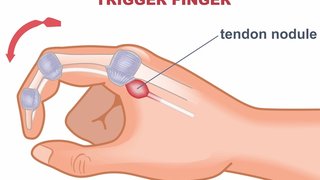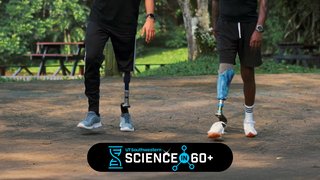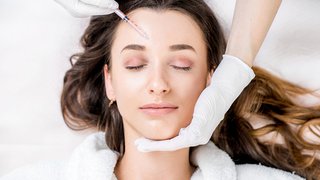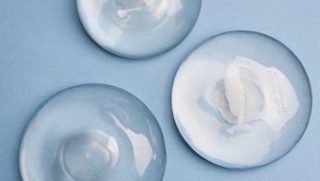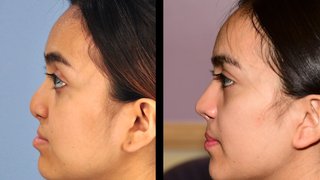Rhinoplasty: What to expect before and after a ‘nose job’
April 14, 2025

What is rhinoplasty?
Rhinoplasty, commonly known as a “nose job,” is a popular option for patients unhappy with the size or shape of their nose. In addition to the procedure’s well-known cosmetic benefits, rhinoplasty has evolved to have much more versatile applications, such as to improve nasal function after a traumatic injury or illness or to help with breathing problems that affect sleep and the ability to exercise.
The goal of rhinoplasty is to revise the nose to the patient’s desired appearance and functionality, keeping in mind skin type and the entire face architecture. Our plastic surgeons combine the science and art of rhinoplasty to give patients effective, lasting results.
Facts about rhinoplasty
- In general, candidates for rhinoplasty should be done growing. Facial growth in teens and young adults, for example, can affect the look and function of the nose over time. The exception would be pediatric patients who have a facial birth defect, such as cleft palate.
- Additionally, patients should be in good overall health and should not smoke because smoking can lead to poor blood flow and increase the risk of tissue damage.
- Rhinoplasty is possible for teens who understand the procedure and have full parental consent. Ideally, girls should be at least 15 or 16 years old before having a procedure; boys should be at least 17 or 18. If combined with a septoplasty (straightening of the septum), this procedure can improve not only a patient’s self-confidence but also breathing.
What happens before the rhinoplasty?
Prior to rhinoplasty, the surgeon should ensure the patient fully understands the procedure and its risks and benefits. While rhinoplasty is a safe procedure, it’s important that the nose surgery is done by an expert. At UT Southwestern, we use 3D imaging prior to surgery to show patients how their nose might look after surgery. The plastic surgeon can print models of the nose as it looks before rhinoplasty surgery alongside the expected appearance after rhinoplasty surgery. This is an educational tool and not a guarantee of the results. However, it can help patients and the plastic surgery team better communicate the goals of the nose job surgery. We’ve found that the ability to visualize the anticipated results also helps patients feel more comfortable about going into surgery. We also have the option to provide 3D print models that can show before and after results.
Reshaping Your Nose and Face with Rhinoplasty
Dr. Bardia Amirlak, a board-certified plastic surgeon at UT Southwestern, discusses how our plastic surgeons use 3D imaging and printing to simulate the natural-looking nose patients want and how rhinoplasty helps make that simulation a reality.
If goals of rhinoplasty involve facilitating better breathing as well as improving appearance, the procedure might include removal of the nasal hump, reshaping of the nose tip, reshaping or resizing of the nostrils, or increasing or decreasing the nose’s overall size and projection.
If additional cartilage is needed to augment the nose, it is frequently taken from the patient’s nasal septum. In secondary or revision rhinoplasty – which is done to correct deformities caused by a previous procedure – this cartilage might be taken from an ear or rib, though sometimes approved cadaver cartilage might also be used. Because of the cartilage needs and potential for scarring, revision rhinoplasty is a more difficult procedure to perform, so it’s important that it’s done by a highly skilled plastic surgeon.
How long does a rhinoplasty take?
Rhinoplasty generally takes 1.5 to 3 hours and is usually an outpatient procedure. In “closed rhinoplasty,” incisions are made within the nostrils – a technique that has a limited ability to make changes. In “open rhinoplasty,” an incision is made across the tissue between the nostrils as well as within the nostrils. These incisions heal very well and are barely visible.
Liquid Rhinoplasty: An alternative to surgery
Liquid rhinoplasty, or nonsurgical rhinoplasty, is a series of office-based procedures done while the patient is awake. Injectable hyaluronic acid fillers are used to alter the shape and size of the nose without invasive surgery.
The art of ethnic rhinoplasty: A nose job that preserves your cultural identity
- Al Aly, M.D.
January 14, 2025

Do you have questions about rhinoplasty?
Schedule a consultation with one our board-certified plastic surgeons by calling 214-645-2353.
Recovery after rhinoplasty?
Following rhinoplasty surgery, most patients experience mild to moderate discomfort that can be controlled with medication. However, the first part of the recovery period can be somewhat awkward at work and in social settings due to possible bruising under the eyes and the use of a splint. Patients should expect to wear splints on the inside and outside of the nose for about a week after rhinoplasty to protect the nasal bones and cartilage. Additionally, patients should avoid strenuous activity such as jogging or swimming for two to three weeks and avoid wearing glasses for four to five weeks.
The nose is a complex structure made of delicate cartilage and bone. A small change to one part of the structure affects the rest of the nose, so rhinoplasty requires expertise to achieve a natural, functional outcome. If you’re considering rhinoplasty, call 214-645-2353 to schedule a consultation or request an appointment online.
Learn more: Click here to watch an informational video about rhinoplasty





